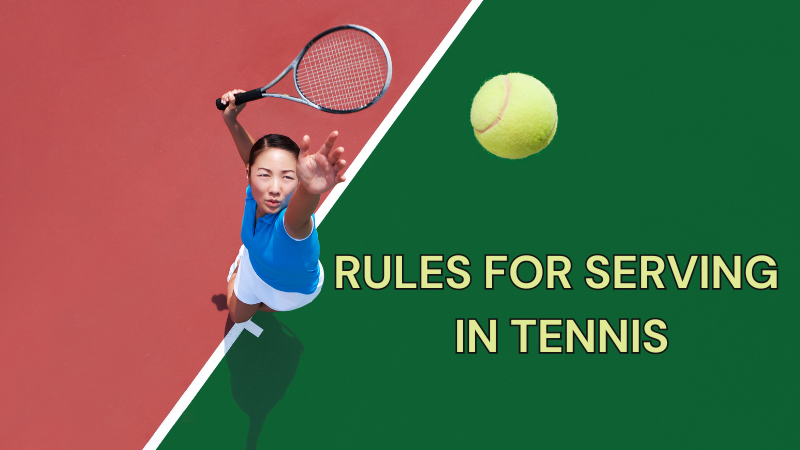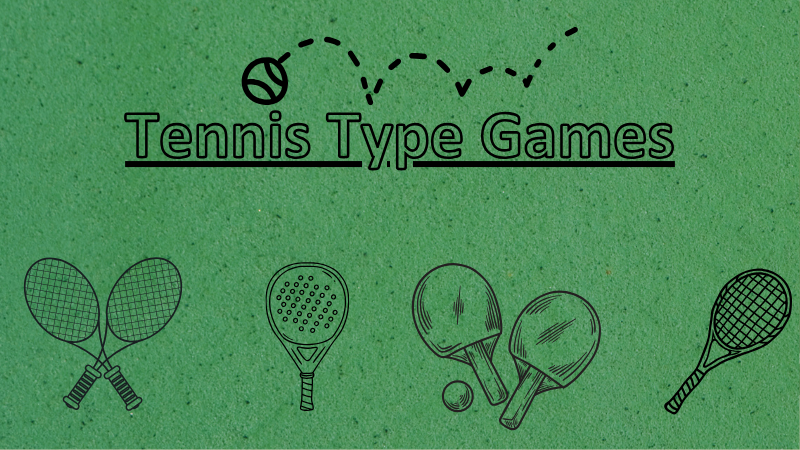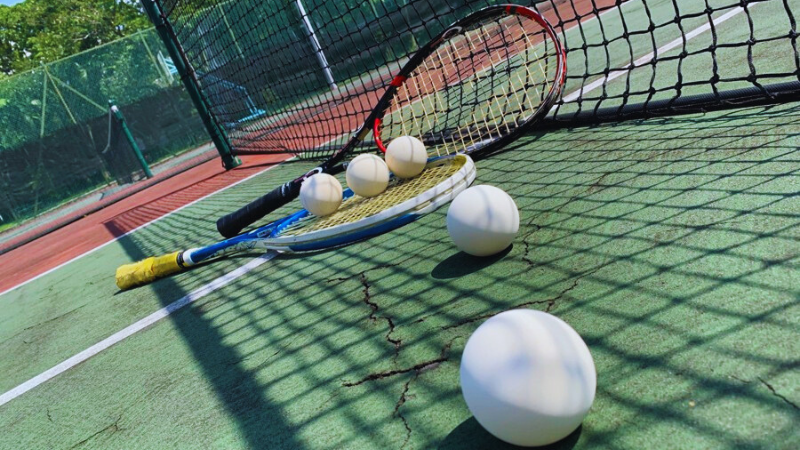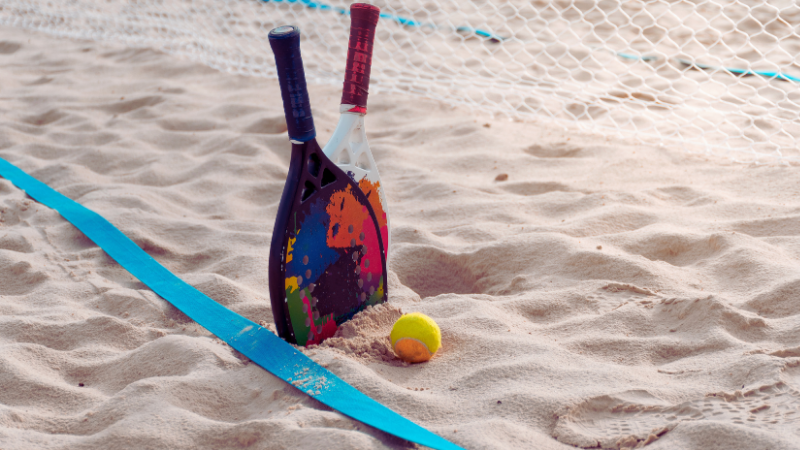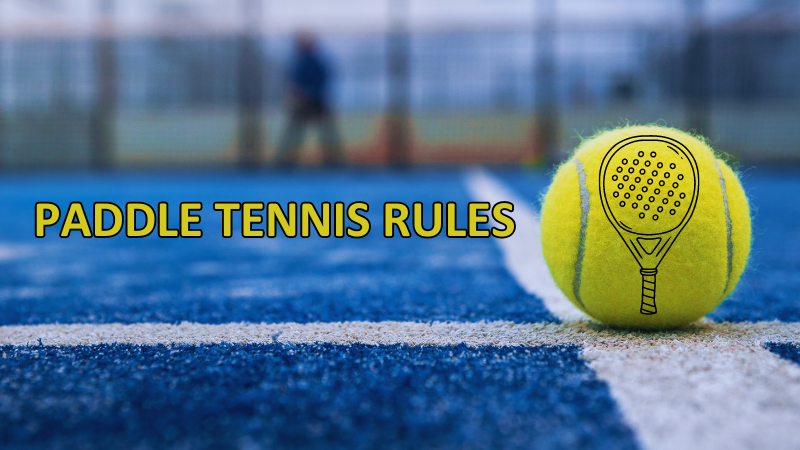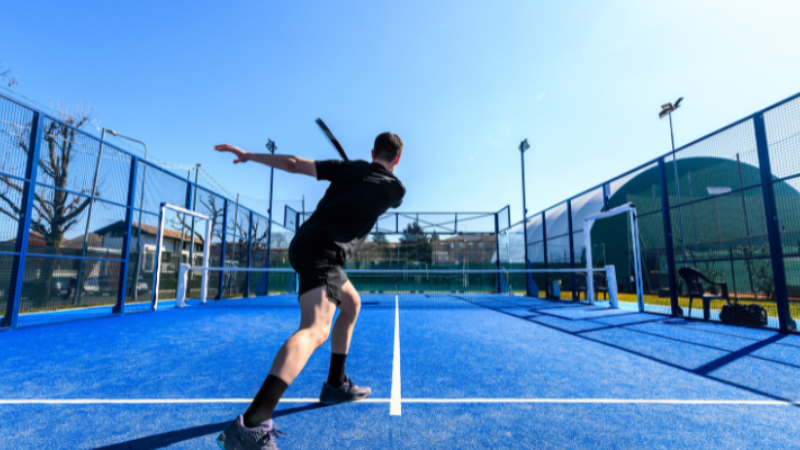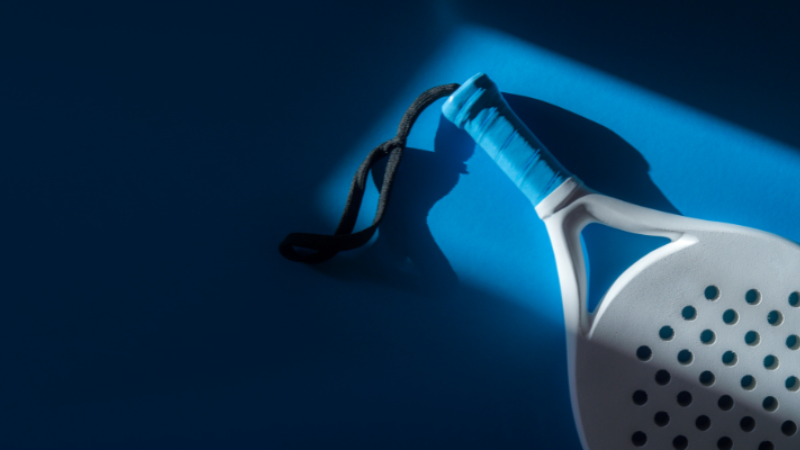The serve in tennis is one of the most complex technical fundamentals, which makes this sport one of the most complicated.
In this article, you will also learn about the different types of serves (flat, slice, and kick). We discuss the basic rules for serving in tennis and the most important tennis strokes.
Rules On Serving in Tennis
In tennis, a player serves the ball to start each game. The server must stand behind the baseline, between the center mark and the sideline. If the server’s foot touches the baseline, it’s a “foot fault,” and the serve doesn’t count.
The ball must go over the net and land in the opposite service box. The serve is not good if it lands outside this area or doesn’t cross the net. But if the ball hits any part of the lines around the service box, it’s in.
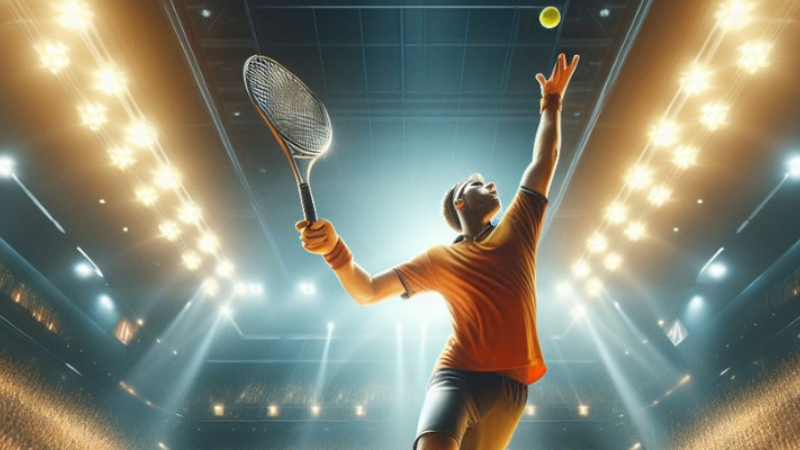
Each player gets two chances to serve each point. If the first serve fails, they can try once more. But if both serves fail, it’s a “double fault,” and the other player gets the point.
Sometimes, the ball hits the net and lands in the right box. This is a “let,” and the serve is done over. If it happens on a second serve and the ball doesn’t land in the correct box, the server must try again. But the server loses the point if there’s no second chance.
To serve well in tennis, players can use different types of serves like flat, slice, or kick. Also, you can learn more about tennis tips and tricks.
Types of Tennis Shots
To play tennis well, you need to know several keystrokes. These include the backhand, the overhead smash, and the serve.
You’ll also learn different serving types like the flat, slice, and kick serve as you get better. Understanding these will help you react the right way during a game and improve your skills.
Let’s talk about the tennis serve and some important strokes. To be good at tennis, you should learn these moves.
There are simple strokes for beginners and harder ones for advanced players. The key is to know how to use them and to make your moves smooth and strong.
The main strokes in tennis are the backhand, the smash, and the serve. These are important for players of all levels, including pros, adults, and kids. To get better, you should practice these strokes a lot.
There are different kinds, like the flat serve, the slice serve, and the kick serve. Each one is used for a different situation in the game. We’ll look at these serves more closely later. We’ll also go over the basic rules of tennis.
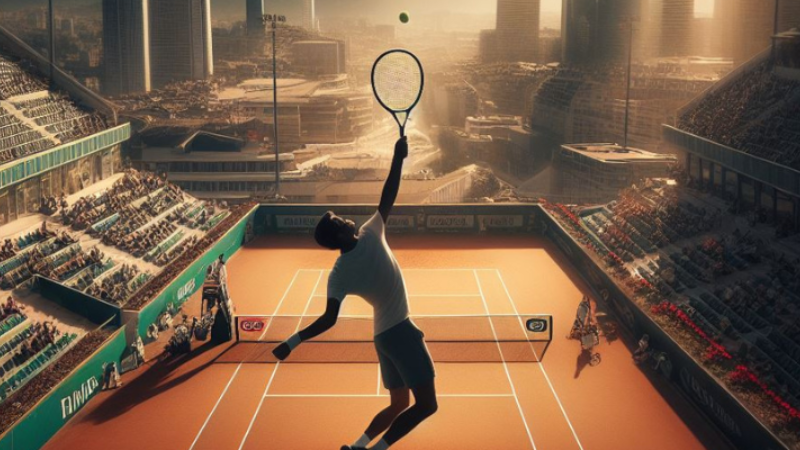
Backhand in Tennis
The backhand is one of the tennis strokes that often gives players the most problems. Knowing how to hit a good backhand is crucial to improve and take your game to the next level.
According to the rules of the International Tennis Federation, there are two ways to technically perform this stroke: one-handed or two-handed. This is the first decision to make. The two-handed backhand is the most commonly used, as it is one of the safest and most powerful tennis strokes.
The biggest advantage over the one-handed backhand is that it offers greater stability and better control of movements. It is also much easier to assimilate and perfect.
Despite this differentiation, the technique of a basic backhand stroke consists of four steps: waiting position, preparation, stroke, and completion.
First, we prepare to receive the ball and hit the shot. We must have our feet apart, knees slightly bent, and body forward. Next, we take the racket in our right hand in our fist and hold it in our left hand.
Secondly, we start to bring the tennis racket backwards. At the same time, we bring our left leg back while turning our shoulders to the side of the stroke. Thirdly, we move the body forward. With the arm extended, we hit the ball while it is still rising after bouncing.
In this case, the body’s weight should be shifted forward, and the hand not holding the tennis racket backward to maintain balance.
Finally, the body should return to the ready position once the movement is complete.
Smash Stroke
This is one of the most popular tennis strokes because it is eye-catching. It is a shot mechanic very similar to the serve in tennis.
According to the rules, the aim is to hit a powerful shot that hits the ground and is as far away from the opponent’s chances of return as possible.
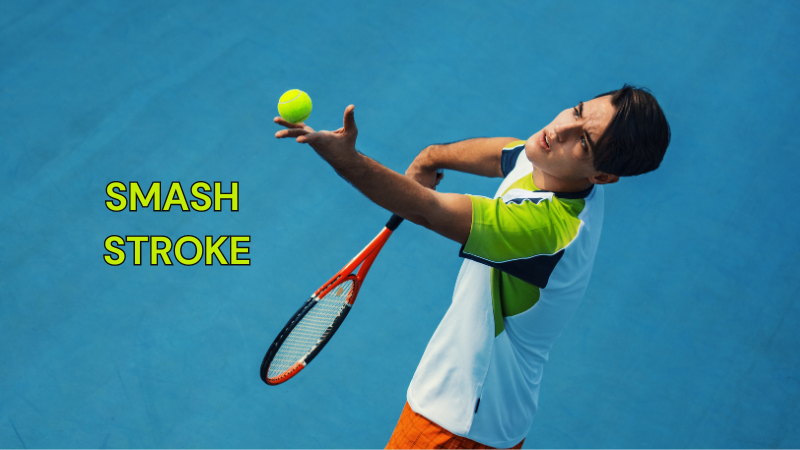
Unlike the serve in tennis, it is an attacking shot that is hit without a previous bounce and from any area of the court: baseline, mid-court or near the net. Normally, it is used to end the point or as a response to a lob, which is usually a defensive shot by the opponent.
As the rules dictate, the smash in tennis also has four phases into which the stroke is divided: waiting position, preparation and shoulder turn, impact and completion.
Firstly, the waiting position is performed with the feet facing the net and knees semi-flexed. The racket must be held with the dominant hand by the fist and the non-dominant hand by the neck of the racket.
Secondly, we bring our left foot forward, turn our shoulders and raise our left hand towards the ball to have a reference of the shot.
We then make the overhead impact. The arm must be straight towards the ball, and the body’s weight is on the left leg and forward. At the moment of impact, the racket remains in the power position, i.e. locked. Then the left arm starts the downward trajectory towards the stomach area.
Finally, we finish the movement with the body’s weight on the front leg, lifting the heel of the back foot.
Serve in Tennis
The serve in tennis is one of the most important strokes as it allows us to take the initiative during the point. However, it requires many technical aspects, such as a good ball release or a good coordination of the stroke.
According to the rules for serving in tennis, the serve is made from the baseline. The serve is only considered good if it enters the opponent’s service box with a cross court trajectory without touching the net.
However, on each point you have two chances to serve. If you step on the baseline or cross it before hitting, the serve in tennis is considered bad.
Correct technique has a greater influence. This makes it necessary to be clear about the main serving movements in tennis. First of all, using the right grip is essential.
The most recommended is the continental grip, in which we have to place the hand as if we were using a hammer. This grip allows you to make different types of serves or strokes, including the flat, slice or slice.
Steps for a Correct Tennis Serve
- Starting position. Depending on the score, the serve in tennis is served from the right or left side, behind the baseline. You have to play the ball diagonally towards your opponent’s service court in both cases.
- Position of the feet. This is the basic requirement for a safe support on the serve. You should place your back foot parallel to the baseline. Meanwhile, position the front foot pointing towards the right net post (for right-handed players) or the left net post (for left-handed players).
- Grip. The way you hold the racket is also important. In general, you should choose the so-called “continental grip“, which consists of holding the racket with the index finger and thumb in a V-shape.
- Racket position. According to the tennis serve rules, the racket should be pointing toward the frame you want to hit the ball into.
- Throwing the ball. A precise throw is essential for the tennis serve. This shot must not be too high or too low. Try to throw the ball so it goes over your head and allows you to stretch your arm with the racket as far as possible.
- Striking motion. The moment the ball reaches its highest point in the air is the signal for the stroke. To do this, you should raise your hand with the racket, throw your back a little backwards, bend your legs slightly and hit.
Rules for Serving in Tennis – Final Thoughts
Understanding and following the rules for serving in tennis is essential for players to improve their game. These rules cover where to stand, how to hold the racket, and where to aim the ball.
Players can gain an advantage and control the match by practicing and mastering different types of serves. In tennis, a good serve sets the stage for success and strategic play.
F.A.Q
How do you serve tennis rules❓
Stand behind the baseline between the center mark and the right sideline for the first serve. Hit the ball diagonally into the service box on the other side of the net, opposite the server’s position.
Where should I stand when serving in tennis❓
Stand behind the baseline between the center mark and the right sideline.
What happens if I step on the baseline when serving❓
Stepping on the baseline results in a foot fault, making the serve invalid.
How many chances do I have to serve in tennis❓
You have two chances to serve on each point.
What happens if both serves are invalid❓
If both serves are invalid, it’s called a “double fault,” and the opponent gets the point.
What is a let in tennis❓
A let occurs when the served ball touches the net and then enters the correct service box.
